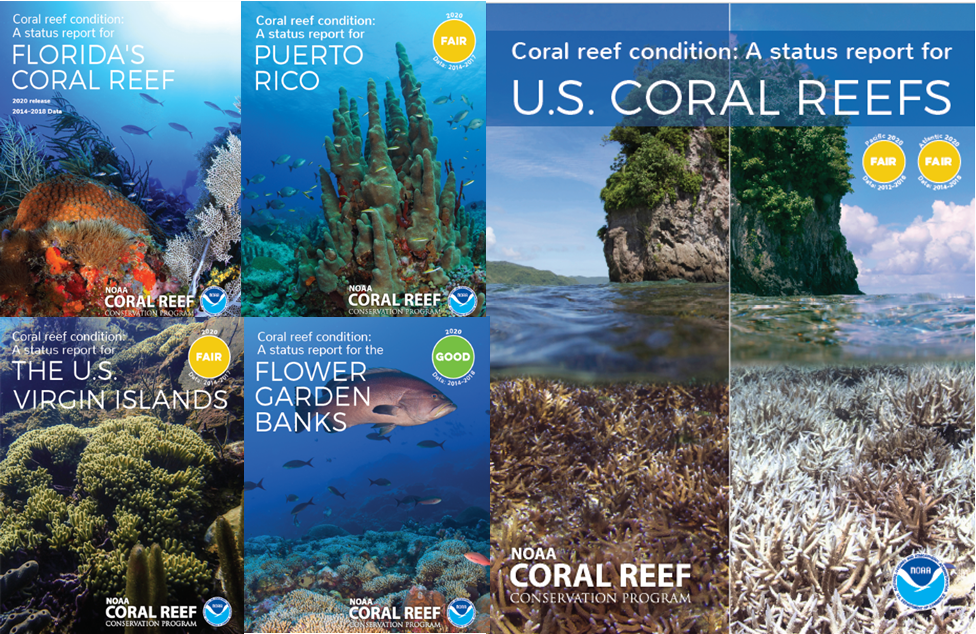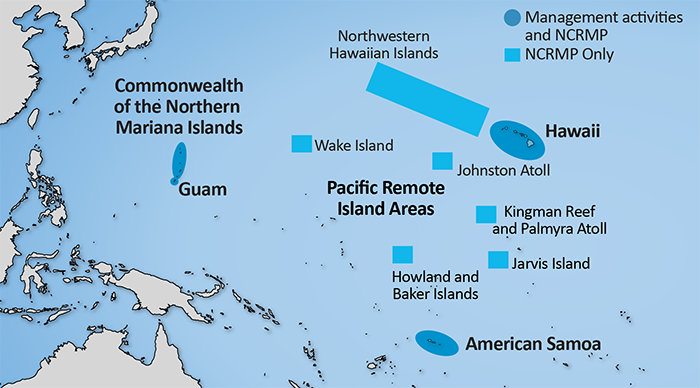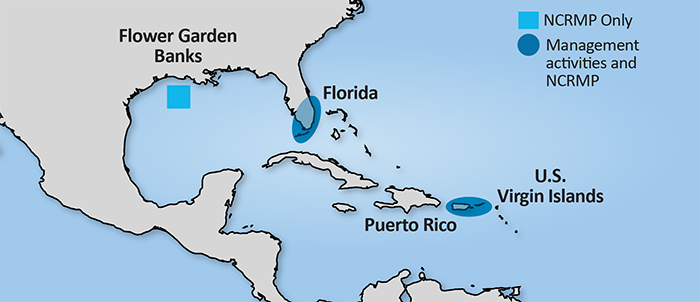-
Home
-
Data & Publications
-
Regional Portals
- About Regional Portals
- Florida
- Navassa Island
- Puerto Rico
- Flower Garden Banks
- U.S. Virgin Islands
- American Samoa
- Commonwealth of the Northern Mariana Islands
- Federated States of Micronesia
- Guam
- Main Hawaiian Islands
- Republic of the Marshall Islands
- Northwestern Hawaiian Islands
- Republic of Palau
- Pacific Remote Island Areas
-
CRCP Activities
- Glossary
A National Status Report on United States Coral Reefs from NOAA's National Coral Reef Monitoring Program
A new article out in February 2022 in the journal Frontiers in Marine Science describes the process of scoring the National Coral Reef Monitoring Program (NCRMP) coral reef status reports for all U.S. coral reef states and territories. By design, the reports were high-level and glossy in order to be easily understood by policy makers and the public. This new article details the technical approaches the authors took to create the scores used in the status reports.

The study represents an unprecedented scale of analysis using largely compatible data collection techniques across the Pacific and Atlantic Oceans, the Caribbean Sea, and the Gulf of Mexico. Although numerous studies have shown the impact of human activities and climate change on coral reef ecosystems, the consistency of data collection and analysis in this effort enabled evaluation of patterns that emerged at national, regional, and jurisdictional scales, providing clear evidence of the impacts of human activities and climate change on U.S. coral reef ecosystems.
This analysis may be considered a model for other coral reef monitoring programs and represents a valuable resource for evaluating national-scale patterns in coral reef ecosystem conditions. This work included novel scoring approaches that standardized results to enable integration of scores across indicators and themes which could then be combined to create a composite measure of coral reef ecosystem status. The value of these scores is in their ability to quickly communicate ecosystem status to a wide variety of audiences who may prefer to see a score rather than read a traditional scientific report format. This scoring framework is especially valuable when communicating the status of coral reefs to policy makers and the general public. For example, the status reports were referenced directly by a member of Congress during a hearing in the United States House Natural Resources Committee in May 2021. This demonstrates the value, utility, and power of this medium, especially given the urgency with which coral reef conservation efforts are needed.


Presenting monitoring data in a report-card style could provide a useful mechanism to garner support for management actions such as expanding protected areas; enforcing existing regulations; increasing climate change education, outreach, and action; implementing practices to reduce land-based sources of pollution; and other actions that will improve the trajectory of coral reef ecosystem conditions.

Read the full study here: A National Status Report on United States Coral Reefs Based on 2012–2018 Data From National Oceanic and Atmospheric Administration's National Coral Reef Monitoring Program.
For more information contact:
Erica Towle (Erica.Towle@noaa.gov)


